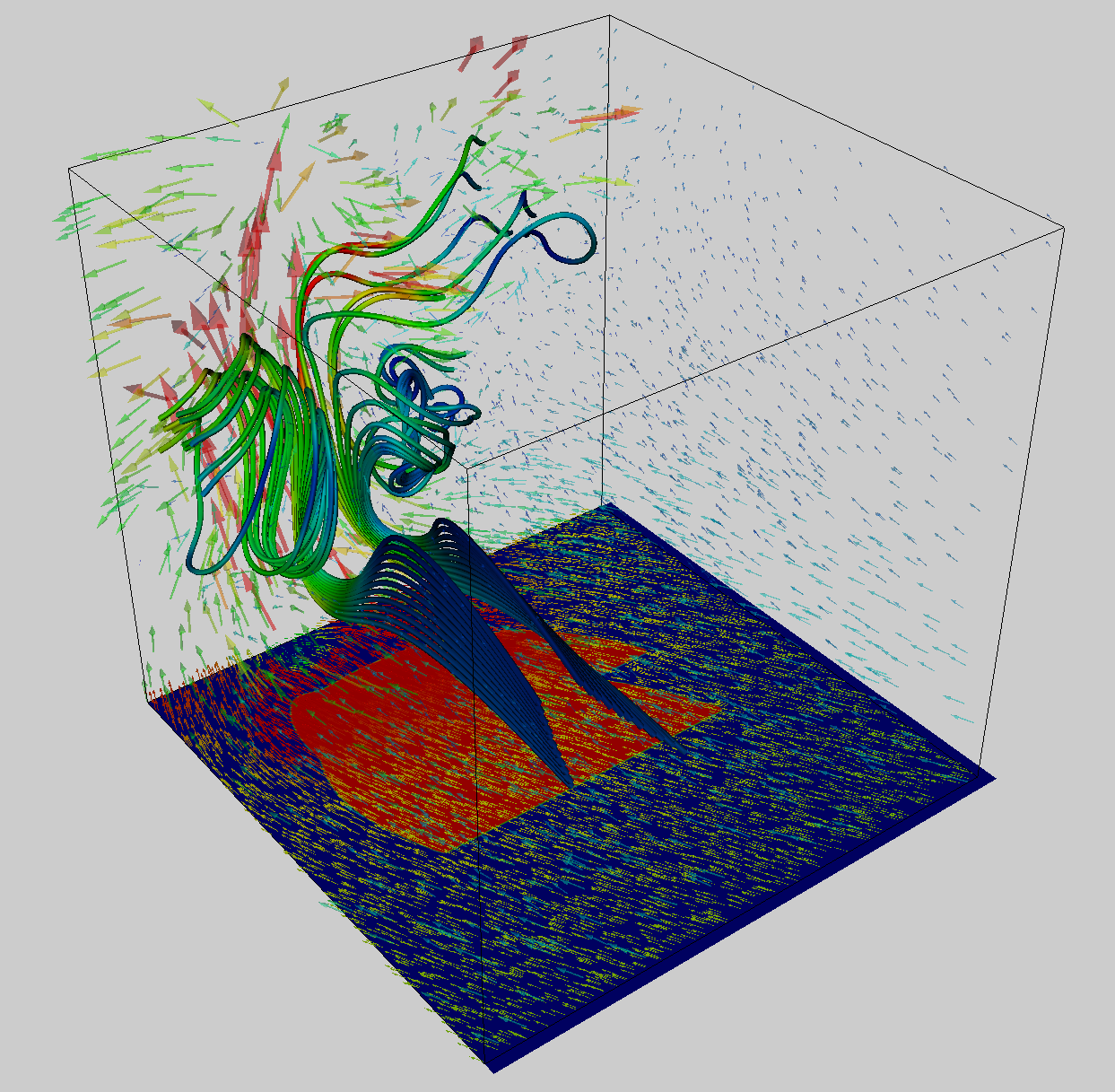Difference between revisions of "Wrffire"
| Line 13: | Line 13: | ||
== Downloads and Setup == | == Downloads and Setup == | ||
= Super Computing Demo 2009 = | = Super Computing Demo 2009 = | ||
The above discussions highlight the currently available visualization results for the wrf-fire simulations. Below we further address possibilities that can be achieved via VisTrails. This section is intended to inspire conversation concerning what it is you would like to show during your demo's. In particular, discussing interesting visualizations of the data produced on your cluster, as well as the performance information of the cluster during the computation of this data. | |||
== Possibilities == | == Possibilities == | ||
== Key Questions == | == Key Questions == | ||
Revision as of 23:41, 30 October 2009
WRF-Fire Project
This page introduces the possibilities VisTrails provides in relation to the WRF-Fire Simulation project.
3D Visualizations via VisTrails
Left is a screen shot of a VisTrails visualization of wrf-fire simulation results. Specifically these visualizations illustrate the fire area, as well as the wind vectors on the surface and throughout the volume. The use of stream rakes improves the visualization of the wind's volumetric flow, highlighting the updraft and vortex features in the vector field.
The VisTrail that produces these images reads in the wrfout NetCDF file produced by the simulation. It extracts the specified variables at a single time step, and displays an interactive 3D visualization within a single cell of the VisTrails' spreadsheet. The images shown are screen shots of this cell.
Downloads and Setup
Super Computing Demo 2009
The above discussions highlight the currently available visualization results for the wrf-fire simulations. Below we further address possibilities that can be achieved via VisTrails. This section is intended to inspire conversation concerning what it is you would like to show during your demo's. In particular, discussing interesting visualizations of the data produced on your cluster, as well as the performance information of the cluster during the computation of this data.
